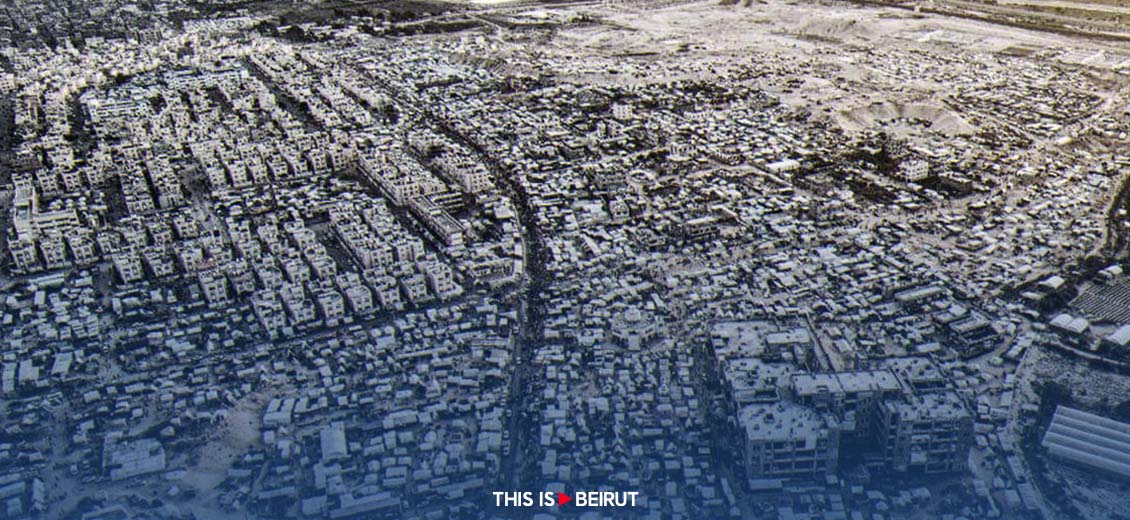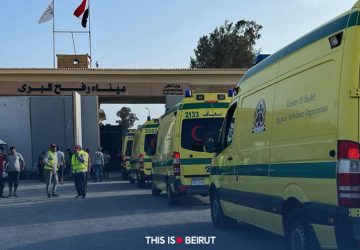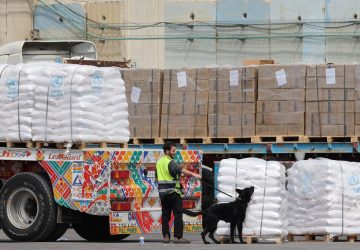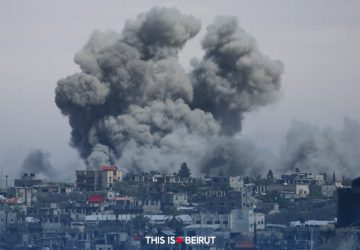Listen to the article
The city of Rafah could mark the last military chapter of the war launched by Israel against Hamas. As negotiations leading to a potential truce struggle to advance, the Hebrew State remains committed to its project to launch a large-scale offensive in this roughly 64 km2 area south of Gaza, home to approximately one and a half million Palestinians (many of whom sought refuge there following Hamas’ attack on Tel Aviv on October 7). Why Rafah? When and how, strategically, do Israelis envision their military operation unfolding? What measure or measures will be taken for civilian evacuation? And what will happen after Rafah? A clarification.
In March of this year, Israeli Prime Minister Benjamin Netanyahu approved the military plan of attacking Rafah, without a set timetable. Tel Aviv sought to launch the attack, despite adamant warnings from the international community, before mid-March. While it was slightly delayed due to sustained international pressure, it seems on the brink of beginning. This is affirmed, at the very least, by retired General Maroun Hitti, during an interview with This is Beirut (TIB): “In my opinion, Israel has already initiated its offensive through intensified artillery bombardments and airstrikes. This forms part of what the Anglo-Saxons call ‘battlefield preparation’.” “In democratic regimes and in military strategy, once an offensive begins, the armed force will persist until objectives are achieved, even if it means putting at risk the combatants’ lives,” he added.
What are these objectives? By conducting its offensive against Rafah, Israel intends to strike the “last” bastion of Hamas, where, according to figures provided by Israeli officials, approximately four “units” are believed to operate. Yet, caution is advised regarding these figures, as General Hitti notes, the question is whether these are battalions, regiments, divisions or brigades… “What is certain,” he indicates, “is that Hamas currently lacks the logistical capability to sustain more than 2,000 to 3,000 combatants.”
Hostages’ Release
This operation would thus fulfill one of the three main objectives that Israel has set for itself in this war: destroying Hamas. “It is clearly not about the total annihilation of the militant group,” Hitti emphasizes. What Israel seeks “is, at the very least, executing, if not neutralizing or move away from the Gaza Strip, the military command of Hamas, represented physically by the two top Hamas officials, Yahya Sinwar and Mohammed Deif,” clarifies the retired General.
On the other hand, Israel intends, through its military operation in this city, to achieve the release of the hostages currently held there. “Since negotiations have failed due to Hamas conditions deemed ‘unrealistic’ by Israelis, the hostage issue will be resolved by force of arms, hence the attack on Rafah,” he explains.
By invading the last “geographical spot” in the Gaza Strip, the Hebrew State seems to be fulfilling a third objective: the administrative transfer of Gaza to an authority other than Hamas. This appears to be concretizing, as asserted by General Hitti, “The people of Gaza are now at the mercy of international assistance, which will be further materialized by the construction of the temporary floating port off the coast of Gaza, expected to start receiving aid trucks in early May.” This development could pave the way, according to Hitti, for the “establishment of an administrative authority sponsored by the United States and certain European countries, especially given that neither Egypt is willing to assume such responsibility, nor Jordan.”
General Hitti suggests that “the Israelis, refusing the Palestine Liberation Organization (PLO) assuming control of Gaza, would lean towards notable figures from the Strip. However, Hamas strongly opposes this, considering any attempt at collaboration with Israel as punishable by death.”
How Would the Offensive Be Conducted?
During an interview with This is Beirut (TIB), retired General Khalil Helou explains the staged nature of the operation in Rafah once initiated. “It is urban warfare, involving underground passages and tunnels.” According to Hitti, it would be “prolonged and costly.” It is worth noting that “the Israelis would initially need to discover the entrance of each tunnel, then potentially proceed with a demining operation within these installations, before allowing dogs, robots, and military engineers to enter prior to the ground troops.”
Evacuation of Civilians
With an offensive in this border town adjacent to Egypt, the fate of approximately one and a half million civilians hangs in the balance. “Satellite images have shown several encampments being set up, particularly to the north of Rafah, and especially near Khan Younis,” Helou affirms.
It is noteworthy that the Netanyahu government has purchased 40,000 tents to facilitate the evacuation of civilians, as announced by Israeli Defense Minister Yoav Gallant. According to information, each tent could accommodate 12 people, potentially providing shelter for approximately 480,000 Palestinians out of the total population of around one and a half million.
Furthermore, General Helou also raises the question, “How will their survival be ensured, especially when only 70 out of the required 500 food trucks enter the Gaza Strip daily to meet the basic needs of the population?”
In this context, according to Hitti, the construction of the American bridge serves as “a support point for aid distribution.” He further explains that Israelis could create exit corridors for civilians to move to designated camps or be resettled in the northern part of Gaza.
That being said, the offensive in Rafah will sure have local consequences. Observers in Lebanon are concerned about a potential expansion of the conflict, with Hezbollah possibly intensifying its strikes against Israel, eliciting an equally or even more violent response.





